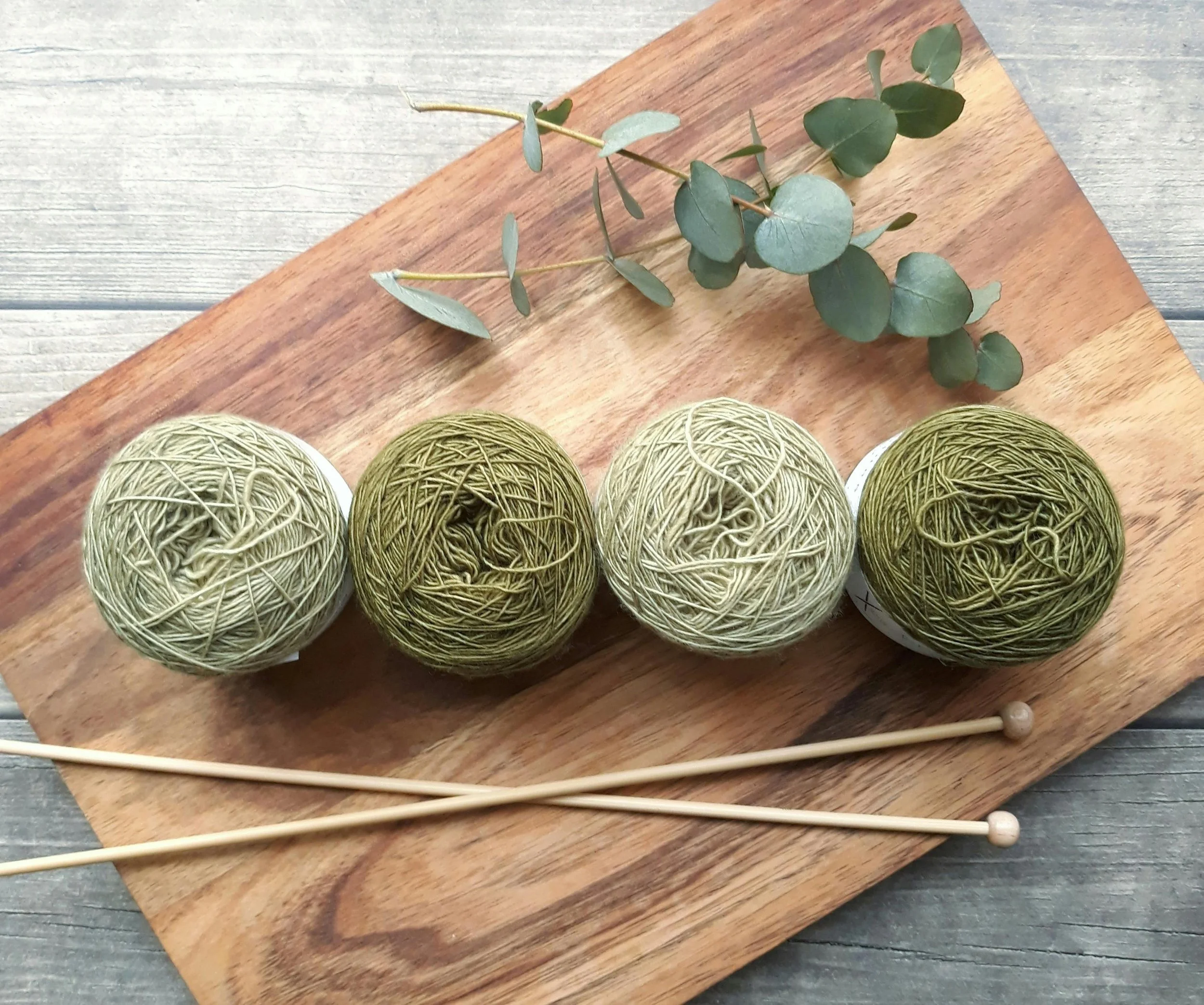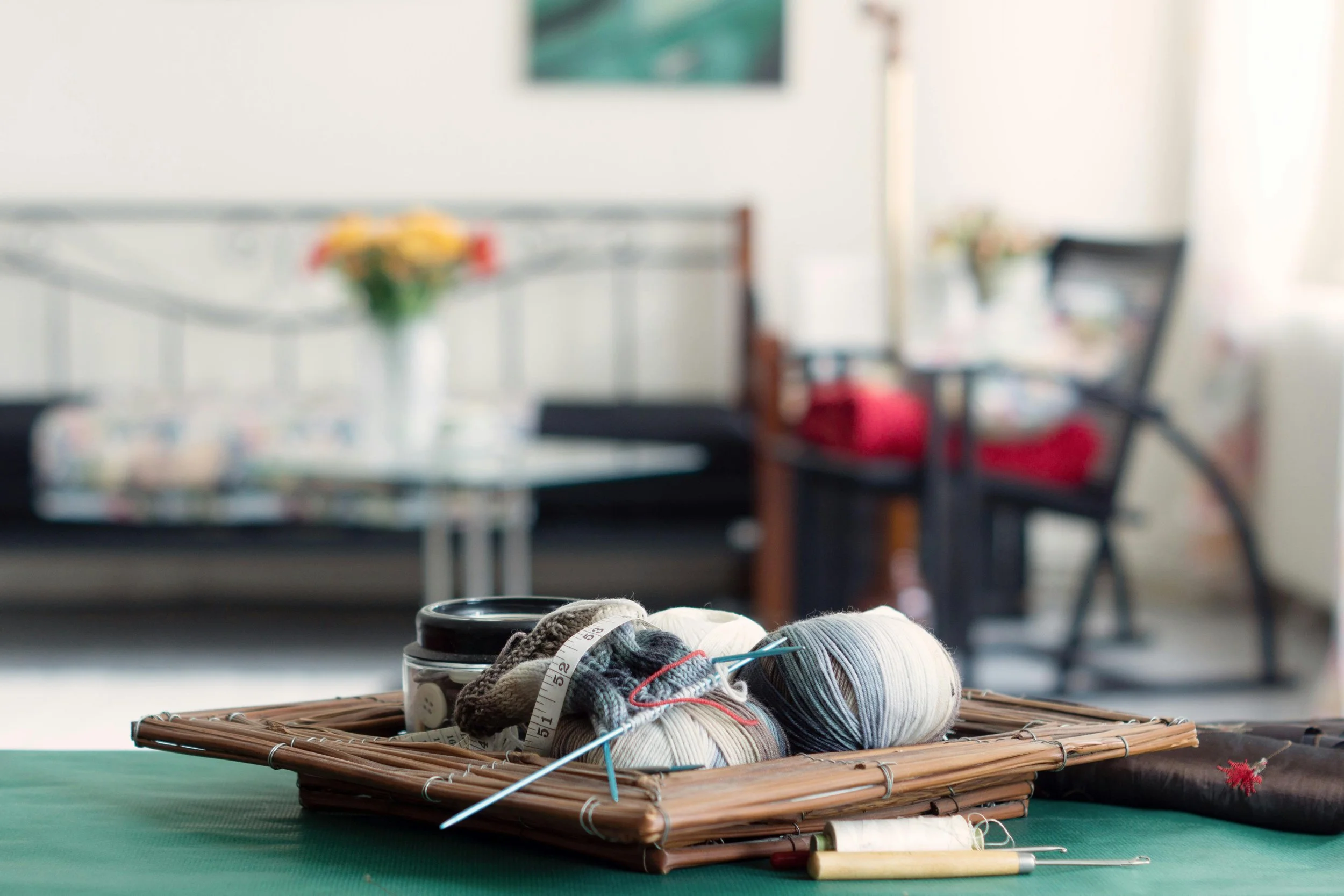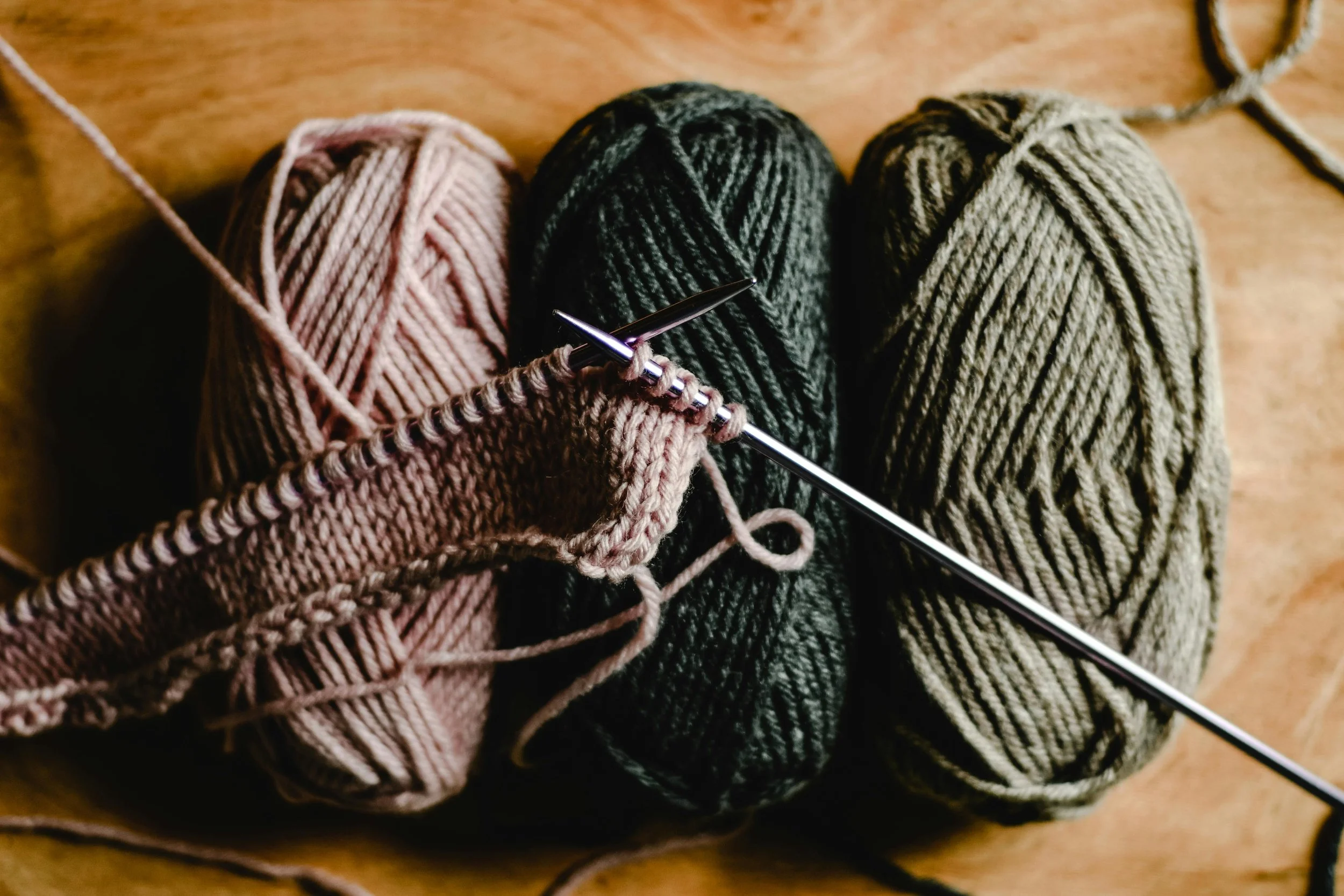Knitting Clubs As Hubs for Political Change
Knitting clubs aren’t just about making cozy scarves or sweaters because they’re also spaces where people can take small but meaningful steps toward political change. So whether you’re an expert knitter or just starting, these groups welcome everyone who wants to connect, create, and stand up for what they believe in. Gathering to knit can be a quiet but powerful way to challenge stereotypes. Often, knitting is seen as just a "nice" hobby, but these clubs show that it can also be a form of resistance, and a way to speak up without even saying a word. Together, knitters mend clothes, share skills, and enjoy "stitch and bitch" sessions where conversations flow as freely. Most importantly, knitting clubs are places where people can be themselves and accept that mistakes are part of the process. Some call it "craftivism" or "quiet activism", a way to blend creativity with causes like feminism, environmentalism, and social justice.
Knitting with Purpose: A Cozy Way to Make a Difference
Many modern feminists have picked up their needles not just to create, but to connect, resist, and empower. In knitting circles, people come together to chat about big issues like fair pay, reproductive rights, and equality while stitching away. It’s a way to quietly but firmly push back against injustice, all while wrapped in the warmth of community.
But this is nothing new, since people have been knitting since about the 3rd to 5th century in the Middle East and North Africa, yet most written history on knitting started in Europe around the 1500s, when knitting was becoming increasingly popular. Knitting has also been connected to politics; the best-known European example is the tricoteuses, the French name for women who knit. These women during the French Revolution perched themselves by the guillotines in the Place de la Révolution to knit while they watched their political foes beheaded. Sometimes, they would sell their knitting, which was made into red bonnets de la Liberté (or Phrygian caps), a signature of the Revolution.
There are also more examples, such as when women spun cloth and knitted caps to boycott British textiles during the Revolutionary War. In 1777, Molly “Old Mom” Rinker reportedly used her knitting as spycraft. She is said to have sat on a rock overlooking Wissahickon Valley, observing British troop movement while hiding information about that movement in balls of yarn for American troops.
In 1860, Sojourner Truth taught formerly enslaved people how to knit as a way to support themselves in a free society. She was often pictured with her knitting, which represented both the industry and advancement. The Riot Grrrl movement emerged out of the punk scene in the United States in the early 1990s and influenced the trajectory of third-wave feminist politics, aesthetics, music, and engagement with popular culture. They have been known to be critical of the sexism and exclusivity at work in the punk scene.
Knitting as a Political Ideology
For many, it’s more than just a hobby, and instead a way to stand up for what’s right. Consider the pink “pussyhats” worn in protest during Donald Trump’s first presidency, or the knitted uteruses mailed to legislators in 2012 to push back against anti-birth control rhetoric. Even yarn bombing, which has been wrapped around trees, benches, or poles in knit and crochet, has become a playful but powerful political statement.
Knitting as community building has even been credited as giving self-agency, and it allows you to tell your story and feelings in a way that can be private and can be communal. Knitting meetups can also allow others to stay informed and talk about local politics, teach area crafters how to parse city meeting agendas, and sit in on city council meetings for accountability. Meanwhile, they can create useful projects like lap blankets for dementia patients, quilts for bereaved mums, teddies for NICU (neonatal intensive care unit) wards, trauma tents, drainage bags for cancer wards, and heart cushions for breast cancer patients.
Groups like the Revolutionary Knitting Circle’s “Knitting Manifesto” have even committed to anti-globalist, anti-corporate, and anti-capitalist action, and their political organizing has occurred in the form of knit-ins, rallies, and marches.
They identify themselves as a constructive revolution that is creating community and local independence, which, in this corporate society, is a truly revolutionary act.
Knitting as an Act of Anti-Materialism
Refusing to fall into the trap of throwing anything away as soon as it’s inconveniently broken is part of the resistance. Despite not being able to fully exit consumer culture, knitters can still use and resist the mainstream media and create their own media sites and networks, both of which are key components of successful activism in technoculture. Also, the act of caring for others and organizing as a community can be understood as a disruptive act in a world that encourages individualism and competition. Yet, the resurgence of knitting can expose the ills of apolitical consumerism and be a path to intentional consumerism. However, yarn prices certainly reflect a tendency to sell to upwardly mobile women with considerable disposable income. And if not adopted correctly could end up reinforcing consumerism and privilege, as yarn and time are often accessible mainly to privileged consumers.
And we should note that handknitting is labor-intensive, so it could end up being a form of underpaid labor, despite being a way to save money on clothing. These financial constraints cannot be ignored since they can bar others from joining in and producing handknit items as a means of economic survival or for the sheer pleasure of it. But is knitting enough to effect political change? Knitting won’t necessarily overthrow a government; it’s not about throwing people out of power, but more so about building communities of care so we can take care of each other. This coming together can also make it easier to care for each other.
Flaws of Knitting as Political Change
Knitting can be seen as a theory of ‘implicit activism’, made up of practices that can be considered ‘modest’ versus glamorous, that often leave little trace or have no concrete impact, nor are explicitly related to a philosophy (such as feminism, environmentalism, etc). Interestingly enough, those engaged in implicit activism often rarely recognise themselves as such, and may rarely seek to challenge existing power structures or seek structural change. Instead, knitting can be a way to help in broader, particular goals and contextualized within direct activism to avoid indirect action.
Knitting also cant always be assumed to be considered feminist in intent, and we must remember that knitting is expensive. Sadly, third-wave feminism has been criticized for its tendency to ignore the conditions under which some women can participate in knitting work while others can’t afford to. There is also something to be said about how man-made goods are often stripped of their association with the conditions of their production, such as exploitation and extraction of natural resources.
Yet, these concerns do not mean knitting can’t be used as a political tool by feminists, nor that it can’t be a path to informed, critical self-reflection and action.




